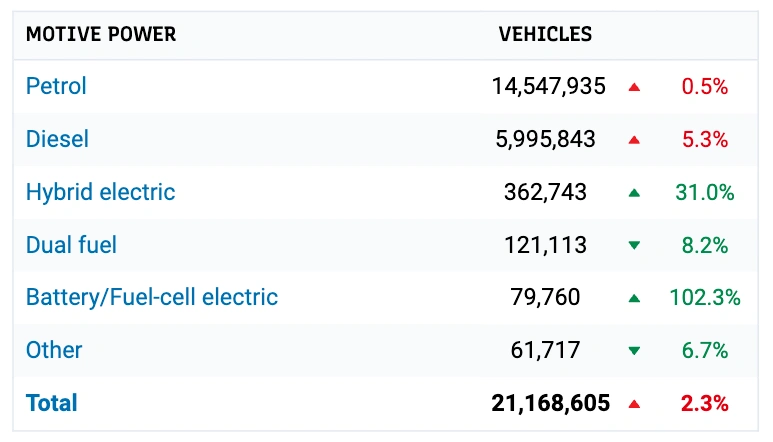Aug 15, 2023
2 min read
Australians like EVs. But we love SUVs too.
In this briefing: we drill down into car emissions. Headlines tell us Electric Vehicle sales are 'soaring'. We all know percentage increases off a low base tend to sound impressive. So this briefing gives you context.
The first thing to know
- Transport is Australia's second-biggest greenhouse gas emitter, after electricity.
- The sector's emissions bounced around during the pandemic and are now slightly below pre-Covid levels.
Chart below: Sector emissions (million tonnes CO₂-e. Excludes land use. Source: DCCEEW*)
The next thing to know
- 'Road' is the biggest category in transport emissions, by far.
- Even though the data here stops at 2022, the proportions are obvious.
Chart below: Transport emissions (Mt CO₂-e. Source: DCCEEW).
Drilling down further
- When we look at 'road' emissions, we see cars dominate.
Chart below: Road emissions (Mt CO₂-e. Source: DCCEEW).
Here's what's changing
- Just 2% of Australia's 21 million registered vehicles are electric. That figure is growing. Last year:
- Battery electric registrations increased by 102%.
- Hybrid electric regos increased by 31%.
- Combined, they add up to 125,000 cars.
- But something else has changed. There are more diesel vehicles on the roads too. Last year:
- Diesel regos increased by 5%.
- That adds more than 300,000 cars
Table below: Total vehicle registrations in 2022 by motive power (with % change from previous year. Source: BITRE*)

What's happening now
- EV and hybrid sales are cutting into the petrol-car market.
- Car sales provide the most timely data on how things are changing:
- Battery EVs were 7% of car sales in July.
- Hybrids and plug-ins were another 11%.
- The car sales data also shows Australians are buying more utility vehicles. More than three-quarters of new cars sold in Australia are SUVs or Utes.
Chart below: Cars sold by motive power (as a percentage of all sales. Source: FCAI*).
- The car sales data also shows Australians are buying more utility vehicles.
- More than three-quarters of new cars sold in Australia are SUVs or Utes.
Chart below: Vehicle sales by class (as a percentage of all sales. Source: FCAI).
Not all SUVs are high-polluting. In June quarter, 22% of medium SUVs bought were Battery EVs (BEVs). But the other models are dragging the chain:
- Small SUVs: 5% BEVs
- Large SUVs: 2%
- Utes: 0.05%
There's plenty more to talk about on the topic of EVs. For example, these national figures hide seismic differences depending on state, region and wealth.
But the goal here is to lay out the trickle-up effect from bottom to top - car choices to top-level emissions.

